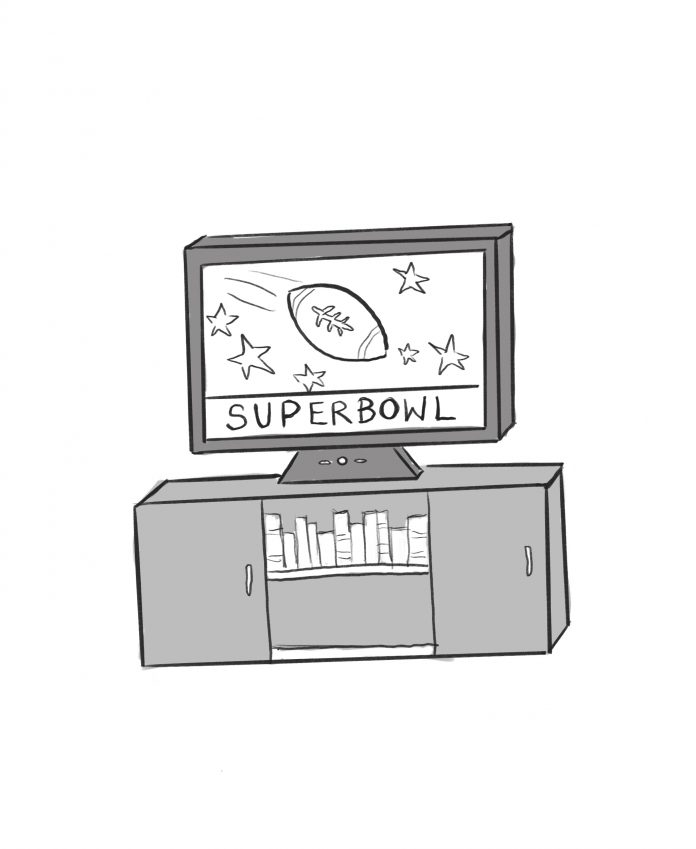Mollie Shiflett ’26 is an undecided major who will probably end up majoring in History. She plays on the Gold Women’s Club Soccer team for the College of William and Mary and is an avid fan of most sports, except golf. Email Mollie at mrshiflett@wm.edu.
Avi Joshi ‘26 is an English major and is an active member of Phi Mu Alpha and big supporter of Metal Club. He plays the drums and likes to read. Contact at asjoshi@wm.edu.
The views expressed in the article are the authors’ own.
It is said that what goes up must come down, which was certainly the case for the Super Bowl ads this year. While the Super Bowl itself was an incredible game of football — no matter your opinion on the last call — the ads were extremely subpar, especially for a game that has produced some of the best ads in years past. In previous Super Bowls, the ads have been exciting and interesting — from the Doritos time machine ad to culturally iconic ads like the Budweiser Clydesdales ad (noticeably absent this year), the “Wassup” ad of 2000 or even the Samsung ad of Seth Rogan and Paul Rudd bickering over Samsung devices.
Just like the halftime show and the actual game of football itself, Super Bowl commercials are necessary to the Super Bowl experience; it’s a trinity that works in unison to create a night of pure joy. The commercials are like everything else about the game. They are designed for the game — they aren’t normal commercials. However, that is sadly what we viewers got this year: normal ads in what should be the Holy Grail of the advertising market. The problem with the ads this year was many of them were just dry and boring, often just showing the C.E.O. of some company talking to the camera behind some scenery.
So what would have made a good Super Bowl ad? Well, it should take a direction: is it going to be funny, sad or informative? Whatever direction it takes, it needs to be attention-grabbing. In normal television, ads do not need to try and entertain — they often are just going for information. But when you have an event like the Super Bowl, the ads need to keep viewers locked in. If all else fails — bring in a celebrity. But if you’re bringing in the star power, you best not miss. A misused celebrity is sometimes worse than none at all. For example, there was an ad this year with Miles Teller in it. Instead of giving him a script with something memorable to say, all he did was dance. And we love Miles Teller, but it felt like a waste of an ad.
However, there were a few standouts — namely, a Breaking Bad-themed Popcorners ad in which the stars of the show, Walter White and Jesse Pinkman, make a deal with a drug lord not to sell him meth, but Popcorners. This ad was not only nostalgic for fans of the show, but also entertaining and interesting. The Blue Moon ad, which depicted a Miller Lite fan and a Coors Light fan fight over which is better before a pint of Blue Moon is placed before them as an alternative, was a simple but clever and funny commercial. It was also surprising, which is an achievement for something that only lasts 30 seconds. It followed the same tactic as one of the other better ad spots on the night: the Tubi commercial. Opening with the game’s commentators seemingly beginning a new segment before cutting to a TV home screen like those of most smart TVs today, Tubi commercial broke the fourth wall and was so convincing that it left viewers honestly believing that their TV was on the fritz. The panic that set in as the commercial began was intense as everyone rushed to find the remote and yelled at whoever was closest for being the reason the channel changed. It was a brilliant ad that did exactly what a Super Bowl commercial should: engage its audience. Though stale messages addressing the audience have made breaking the fourth wall in ads less successful, the Tubi commercial soared.
Overall, this year’s Super Bowl ads were lacking in entertainment value. There were a couple diamonds, but most of the commercials were dry and lacked personality. Hopefully, next year’s ads will return to their roots — or learn from this year’s diamonds — and give us something to cheer for again.

